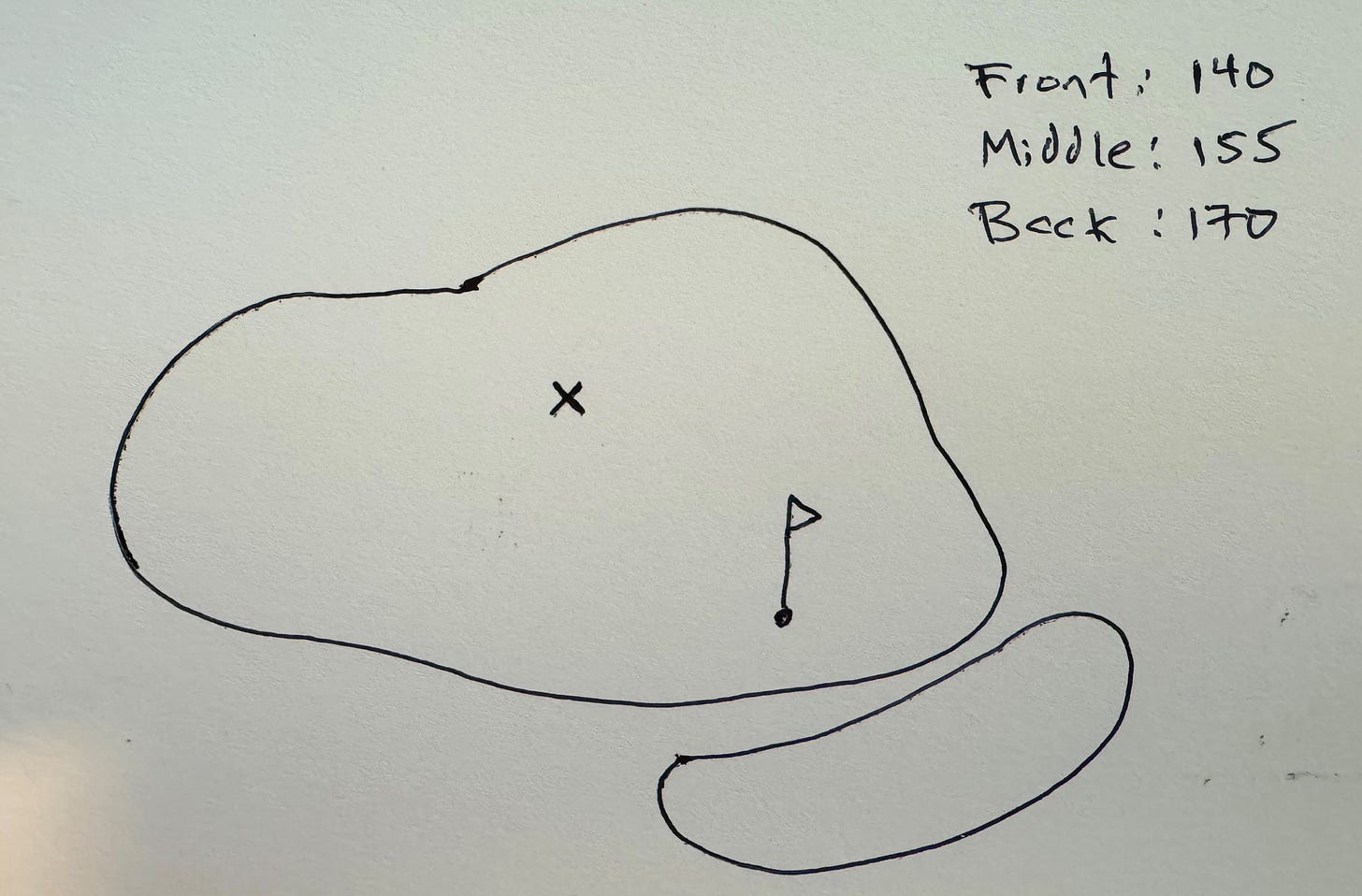Repost: What is a Good Shot?
This deep dive is a repost, but one that I think warrants a reread (myself included).
Enjoy, and have a good weekend!
Also, Happy Birthday to my wife. We’ll be hitting the links tomorrow. ⛳
What is a good shot?
It’s a simple question, but many golfers don’t know the answer.
In Jon Sherman’s book The Four Foundations of Golf, he has an entire chapter dedicated to this question.
Here’s Jon’s introduction to the chapter:
“Golfers are incredibly demanding of themselves, and it often hinders their ability to enjoy the game and play better. One area in particular where most of us struggle is how we evaluate the quality of the shot we just hit.”
This is so true and, without a doubt, has been one of the best game-changing pieces of advice for my own golf game.
Jon sums it up perfectly:
“Having a fundamental understanding of reasonable outcomes based on your skill level can be transformative for your game. Your mood can improve, you will make better strategic decisions, and your scores will drop.”
This isn’t hyperbole. You can drastically improve your golf game without a single swing change. Your results improve, your mental game improves, and it becomes a self-reinforcing flywheel.
Approach Shot Example
I don’t offer advice on the course often. Nobody likes that guy. But I’m fairly confident I could shave 5 to 10 strokes off a mid to high handicapper’s round just by helping them understand what a good shot is and making better decisions.
Here’s an example of how I would “caddie” for a 20 index:
Situation: 150 yards out from the middle of the green, in the fairway. Bunker front right, flag tucked behind.
(enjoy my beautiful illustration below)
I’d start with these four questions:
Where is the trouble? Sandtrap is on the front right.
Where is the flag? It’s tucked in the front right, about 142 yards out.
What is the yardage to the middle and back of the green? 155 and 170 yards
What is a good shot, and what are the odds I get on the green from here? A good shot would be ANYWHERE on the green while focusing on avoiding the sand and not being short-sided. Odds are a ~30% chance of a GIR.
Where many of us go wrong in this situation is when we laser the flag and say, “ok, where’s my 142 club?” Then fire directly at the pin.
This will significantly increase the odds of getting a double bogey. You are bringing trouble into play by moving your dispersion circle off the largest area of the green and significantly reducing your odds of a GIR.
The average proximity for a 20 index from 125-175 yards is…
107 feet!
Plan accordingly. Know the odds so you can put them in your favor.
So what do we do?
IGNORE THE FLAG.
We are going to aim at the center of the green, with a slight bias towards the back yardage. Let’s call it 160 yards. This will give us the highest probability of getting on the green and keeping our misses away from trouble.
Why? If you’ve read How to Hit More Greens in Regulation, you know that amateurs of all levels (even scratch golfers) rarely hit their approaches over the green, whereas shots short of the green are much more prevalent (see chart below).
Next, we’ll pick a club that comfortably goes 160 yards, not 160 yards, if we hit it perfectly.
And the final part. Hit the ball and be ready to accept the result based on reasonable outcomes for your skill level.
This is the hardest part. Even if you have all the knowledge we discussed and make smart decisions, your emotions can still get the better of you. We’re human, and golf is hard. But we can get better at it, and that becomes a self-fulfilling cycle of better decision-making, a better mental game, and lower scores.
Parting Words
I’ll finish with one more Jon Sherman quote:
“Whether you have a driver, iron, wedge or putter in your hand, you have to do your best not to let your expectations get the best of you. Remembering many of these statistics while you play can truly transform your enjoyment and performance.”
Til next week.
Go Ravens.










